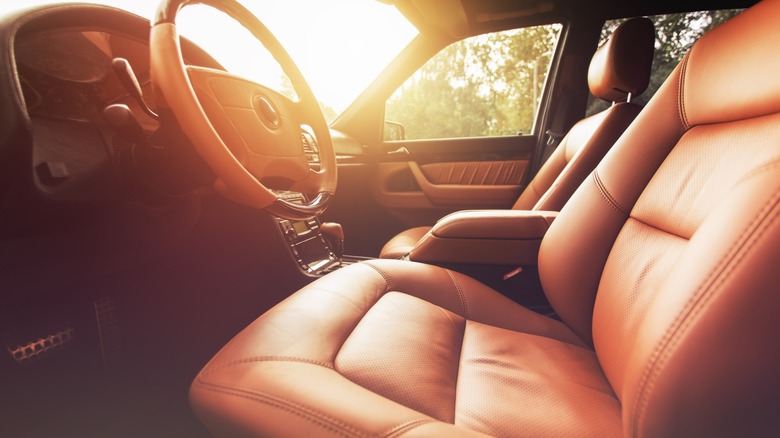Why You Should Never Leave Your Laptop In The Car (Whether It's Hot Or Cold Weather)
It is tempting to just leave all the gear you need in the car so you never have to worry about forgetting it. It could save you some time and offer some convenience, but you have to weigh that decision against how much you want your device.
If you've ever sat in a car with the A/C off on a 90 degree day, it immediately becomes clear why leaving your laptop inside there might mean you'll need a new one. A car in direct sunlight can compound heat from the sun, burning up its interior while the heat has hardly anywhere to escape. Although laptops do get warmer while being used, they have cooling mechanisms and can shut down before ruining any vital components.
No such option exists for a laptop in a hot car. Lithium-ion batteries, which most laptops have, also do not do well in such heat — that's why electronics are among the things you should not leave in your car when its hot. If the battery survives such extreme temperatures, it can permanently undermine its life.
Lithium batteries also do not like the cold, as explained in the science behind why EVs have such a reduced range in cold weather. You can get away with it as long as you don't use or charge your laptop while it's in extreme cold temperatures. However, you still have to deal with the condensation that could form liquids and ruin internal components when you turn on the heater shortly after it's been in such extreme cold.
How quickly can a car's temperature get extreme?
The CDC and NHTSA have both confirmed that the inside temperature of your car can rise by 20 degrees Fahrenheit in just the first 10 minutes. The CDC also adds that cracking down a window barely makes any difference, while further studies have found that the average increase in temperature in a car on a sunny day is about 3.2 degrees Fahrenheit every 5 minutes, with about 80% of the total rise happening in the first 30 minutes.
Even in relatively cool temperatures, a car can get very hot quickly. The NHTSA says that a car's inside temperature can rise above 110 degrees Fahrenheit, with outside temperatures in the mid-60s. At 110 degrees Fahrenheit, you're already flirting with temperatures that could potentially harm a MacBook. Apple states not to store your laptop anywhere the temperature exceeds 113 degrees Fahrenheit, and then specifically warns users not to leave MacBooks in a parked car because the heat could damage them.
At about 113 degrees Fahrenheit, your battery will start aging irreversibly, and keeping your SSD in temperatures of this range consistently for months could permanently erode how well it holds information. At 140 degrees Fahrenheit, adhesives and LCD panels could start failing, and you'll start seeing bubbles and peel-offs on your screen's important components. It only needs to be 95 to 100 degrees outside, and you only need to leave your laptop for one hour for this to potentially happen.
If you must store your laptop in the car, here's what to do
If you must leave your laptop in the car, and there's no way around it, there are some steps you should take to reduce the risk of damage.
For starters, avoid the hottest or coldest parts of the car. That would be anywhere that could be directly exposed to sunlight, like the dash and the seats. You should put it in a shaded area like the shaded floor, the footwell, or under the seat, especially in cold weather. In the heat, you can use a windshield sunshade every time you park, since this cuts interior temperatures somewhat.
However, before doing that, you should shut it down — not sleep — and keep it in an insulated sleeve or bag. While the bag would keep the cold away, it can also reduce heat soak through a process called thermal inertia. Of course, you want to make sure it's not charging in any of these extreme temperatures, so you might want to ditch those car productivity gadgets for now.
Finally, when you get back, allow the laptop to cool down or warm up slowly. Extreme temperature changes are not good, as they can cause cracking and condensation, both of which are never good for anything with a screen, battery, and microchip.


